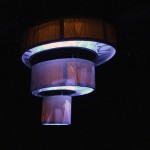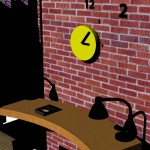Martijn ten Bhömer, Christoph Bartneck, Jun Hu, Rene Ahn, Tuyls, Karl, Frank Delbressine, and Loe Feijs
Abstract – Lego Mindstorms NXT is a platform highly suitable for prototyping in the field of interactive social robotics. During a technology masterclass at Eindhoven University of Technology students from the department of Industrial Design have developed five novel extensions (sensors and actuators) for the Lego Mindstorms NXT which extend the ability of Lego to prototype for robotics even further. Applications include a water-pump, GPS sensor, wireless sensor bridge, optical mouse sensor and a magnetic grabber. In this paper we will present these extensions and showcase applications in which these extend possibilities of Lego Mindstorms NXT to a new level.
Keywords: robot, Lego, Mindstorms, NXT, social, prototyping
FULLTEXT: PDF HTML REFERENCE: BibTeX EndNote

